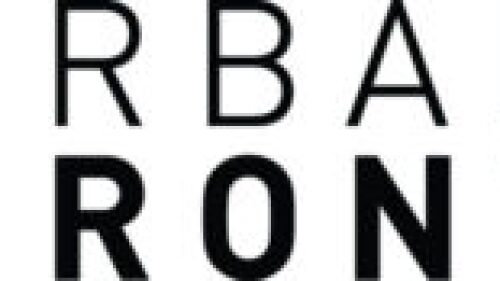
From left: Alex Kaplan, vice president of global partnerships, Swiss Re America Holding Corporation,;Eileen Marrinan, director of research, Grosvenor; Aidan Hughes, group leader, ARUP; and moderator Matt Lewis, vice president and director of communications, Next Generation. Panelists discussed broad methods of regional resilience measurement and applications during a plenary session at the Building the Resilient City conference.
As cities develop resilience strategies in anticipation of more frequent and severe weather events triggered by climate change, understanding what success looks like across a broad spectrum of indicators will be critical to their efforts, according to panel on resilience metrics at ULI’s Building the Resilient City: Risks and Opportunities conference, held in San Francisco.
The panel shared insights from three distinct analyses: two sets of rankings that quantitatively capture risk and preparedness of major cities throughout the world, and a third approach that offers cities a baseline tool and descriptive language to assess their own resilience.
Published in September 2013, global reinsurance giant Swiss Re’s Mind the Risk ranks 616 cities that represent 25 percent of the world’s population and 50 percent of global gross domestic product (GDP). Grosvenor’s Resilient Cities, meanwhile, carves out a narrower slice, examining climate vulnerability and adaptive capacity of 50 major cities where the U.K.-based firm holds major investments. In partnership with the Rockefeller Foundation’s 100 Resilient Cities initiative, professional services firm Arup developed the City Resilience Framework that identifies 12 key indicators of what it calls a city’s “immune system.”
Swiss Re: Understanding Failure First
Swiss Re’s analysis reflects the insurance industry’s deep sense of urgency around climate change as “the overwhelming majority of assets [around the world] are not insured,” leaving government insurance programs—and ultimately taxpayers—as the carriers of risk, said panelist Alex Kaplan, Swiss Re’s vice president for global partnerships.
To illustrate climate change’s economic impact, Mind the Risk focuses on cities that are the major drivers of their countries’ GDPs. Using Swiss Re’s proprietary mapping models, the report ranks cities according to three criteria: their vulnerability to five types of disasters (river flooding, tsunamis, windstorms, storm surges, and earthquakes), the total number of working days lost based on the city’s population, and the impact these lost working days have the national economy.
“Before you measure success, you may want to measure what failure looks like,” Kaplan said.
Mind the Risk visualizes its data through pie charts to readily see the risk profile of each city and the extent to which a natural disaster could paralyze national economies. For example, although the Tokyo-Yokohama metropolitan region is home to 37 million people, the Costa Rican capital of San José outranks it on a scale measuring the impact of total lost working days on the national economy. “San José makes up the vast majority of the Costa Rican economy,” Kaplan said. “If there’s an earthquake, it’s likely going to cripple Costa Rica.”
Grosvenor: Resilience Informing Investment Decision-Making
Grosvenor’s Resilient Cities report grew out of a three-year effort by the investment firm to “expand the way we think of risk and return to include . . . resiliency” during the capital allocation process, said panelist Eileen Marrinan, director of research, Grosvenor Americas.
Grosvenor examined 150 data sets to develop its 50-city ranking, which captures not only vulnerability to climate risks, but also adaptive capacity to build back better. (See previous Urban Land coverage.)
Grosvenor’s ranking organizes cities according to five areas of vulnerability: extreme weather events and sea-level rise caused by climate change; the level of environmental degradation and urban sprawl; access to food, water, and energy; solid housing, utilities, and infrastructure; and social equity factors like the availability of affordable housing, adequate health and educational institutions, government transparency, and freedom of religion. Cities’ adaptive capacities were ranked according to the following: the strength of local governance, a robust sector of nongovernmental organizations (NGOs) and community organizations, access to technology, disaster preparedness and planning, and access to capital and funding mechanisms.
Not surprisingly, cities in the developed world rose to the top of Grosvenor’s ranking when their vulnerability and adaptive capacity scores were combined. (The top five cities are Toronto, Vancouver, Calgary, Chicago, and Pittsburgh.) Marrinan noted that London, Grosvenor’s headquarters city, ranked at number 18 due to social tensions that have erupted over the lack of affordable housing. “We’re trying to be more proactive about keeping London a world-class city and a place that people want to invest in,” she said.
The report notes that the weakest 20 cities are in emerging markets, and eight of them fall in the BRIC nations (i.e., Brazil, Russia, India, and China), all experiencing “blistering economic growth.” Marrinan noted that Grosvenor is increasingly fielding calls from developing nations interested in improving their adaptive capacity to attract greater foreign investment.
Arup: Providing Cities with the Right Language
Finally, Arup, which provides engineering, planning, and architecture services to clients around the globe, is working with the Rockefeller Foundation’s 100 Resilient Cities to provide cities chosen to participate in the program with tools and definitions as they develop resilience across infrastructure and social and economic institutions. Its framework categorizes 150 variables across four broad categories: health and well-being; leadership and strategy; economy and society; and infrastructure and environment.
“Our intention was not to rank cities,” said panelist Aidan Hughes, a principal with Arup in San Francisco. The difference between Arup’s framework and other resilience rankings is that Arup’s definition of resilience is “intentionally broad.”
“It’s not just about climate change and the impact of natural disasters,” Hughes said. “It addresses other issues like epidemics, literacy, and lawlessness,” all of which can hinder a city’s ability to bounce back after a disaster. By drilling down to “a fine-grain resiliency,” Hughes noted, the framework allows cities to inventory their own strengths and weaknesses as they develop resilience strategies needed today, tomorrow, and for the foreseeable future.





